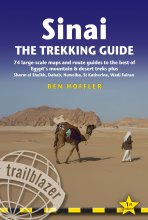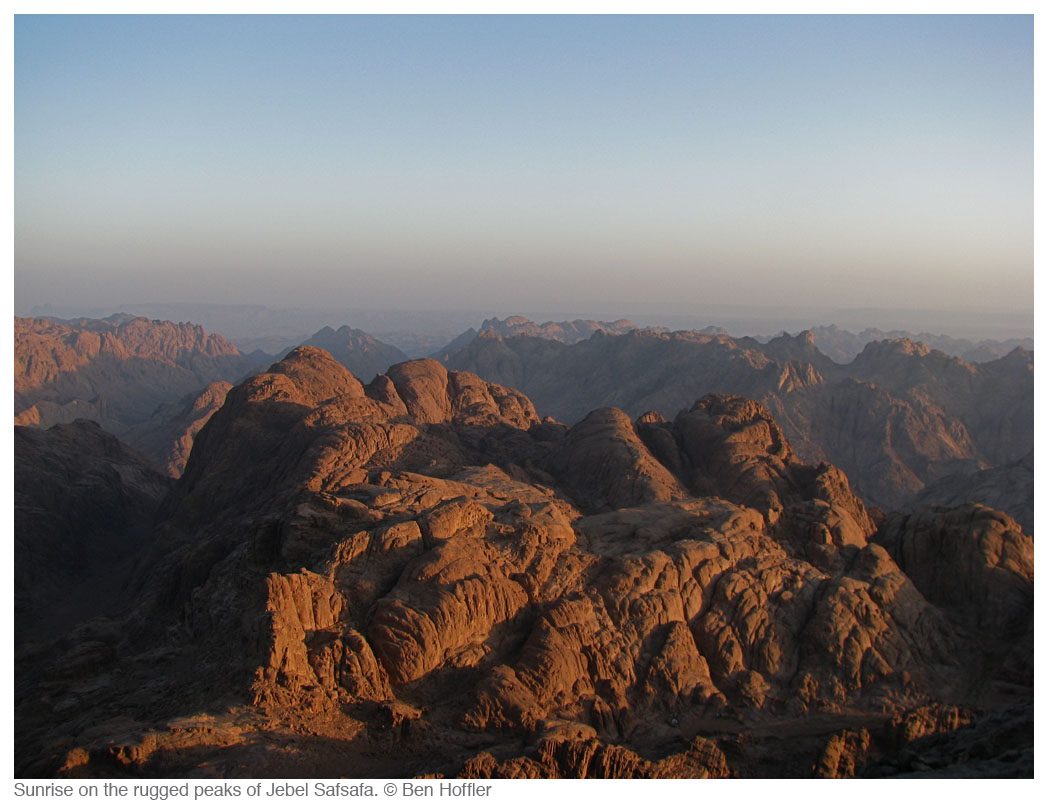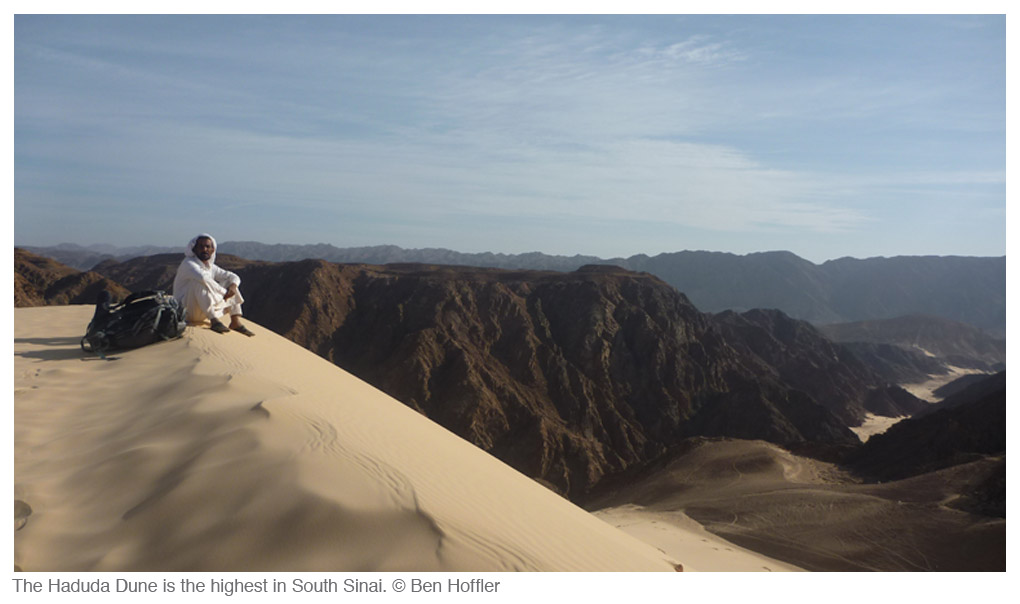Wonderful handbooks
— The Bookseller

Sinai - The Trekking Guide
Excerpt:
Route options
Contents | Introduction | Planning your trek | When to go | Route options | Sharm el Sheikh | High Mountain Region | Sample trek: Jebel Berqa | Sinai desert trekking routes map
Route options
There’s an extraordinary diversity of scenery in the Sinai: high mountains, sandstone plateaus, sweeping deserts and immense seaboard plains. The treks in this book give a representative selection of the best. Classic trekking highlights are the focus but the spectacular wild and untrodden parts haven’t been forgotten. There’s plenty of variety: some routes are classic mountain walks, others wadi-based treks, and one or two mostly scrambles. Along with the scenery, many treks have an historical attraction: some are notable for their Nabataean and ancient Egyptian history, others for their early Christian heritage. Treks can be done as shorter routes or linked into bigger circuits and there’s a range in difficulty. There’s plenty to choose from and you should find something suited to your interests and capabilities. See map opposite back cover.
Note: Trek names are specific to this book and may also be known by other titles.

HIGH MOUNTAIN REGION
This is an area of rugged granite peaks, sometimes dubbed ‘The Roof of Egypt’. Home to Mount Sinai and the Monastery of St Katherine, the area is steeped in history and fable and is the peninsula’s most popular trekking region.
Mount Sinai/Jebel Musa (1-2 days)
Mount Sinai – or Jebel Musa as the Bedouin know it – is a holy peak for millions of people. This is where it’s said God gave Moses the Ten Commandments. There are two tourist routes to the top: the Camel Path and Steps of Repentance (both often combined in a circuit). This trek takes you up another way, long favoured by local monks, pilgrims and the Bedouin. You can wander around the mountain’s forgotten chapels and climb the pretty peak of Jebel Safsafa (‘Mountain of the Willow’) before finishing on Mount Sinai itself.

Jebel el Deir (1-2 days)
Jebel el Deir stands opposite Mount Sinai; a mass of bulging cliffs and rounded pinnacles. It’s seldom climbed and has virtually no trails; it’s more a scramble than a trek and this route will appeal to the adventurous. The mountain has a hidden complex of Byzantine ruins, along with a beautiful high basin where you can gaze down on the Monastery of St Katherine.
Galt el Azraq (3-4 days)
This shows the High Mountain Region at its finest – it’s the best trek in the area. It begins by winding through rugged wadis to the blue pool of Galt el Azraq (where you can swim). You move into the wilder, western parts of the mountains from here, climbing the frontier summit of Jebel Bab el Dunya (‘Door to the World’). This looks over the Red Sea to Egypt and the jagged summits of Africa rise in sharp outline on a good day. You traverse a line of high cliffs after this – some dropping off nearly a vertical kilometre – before finishing in some pretty wadis lined with green Bedouin orchards.
Northern Peaks Circuit (2-3 days)
The northern massif is the most untrodden part of the High Mountain Region. Its three major summits are ascended in the first half of this trek: Jebel Suna, Jebel el Ojar and Jebel Banat. The second half is more a wadi walk; you pass the high waterfall of Sed el Nugra before cutting out of the High Mountain Region to the lowlands. You re-enter on a beautiful old pilgrim trail to the Monastery of St Katherine, through Naqb el Hawa (‘Pass of the Winds’).
Jebel Katherina and Jebel Abbas Basha (2-3 days)
Jebel Katherina is Egypt’s highest summit; an obvious, time-honoured trekking target. Jebel Abbas Basha, the second highest peak in the local area, is crowned with an Ottoman palace. This isn’t a remote trek but both peaks are climbed by adventurous, off-the-beaten trail routes harbouring Byzantine ruins. You can do it in two days or spend the second night on Jebel Katherina, making it three. Africa and Asia are both visible from the top and you’ll see the sunset, sunrise and shimmering lights of faraway towns at night.
Jebel Umm Shomer (3 days)
Egypt’s second highest summit, Jebel Umm Shomer, is a mass of sharp teeth and foreboding pinnacles. It remained unclimbed until 1862, defying several intrepid explorers. The way is well-trodden today, but it’s strenuous with plenty of scrambling. The second half is all downhill; you follow an ancient mountain road that once linked Mount Sinai with the port of Raithu.
There’s a spectacular gorge in the last stretch; one of the peninsula’s great natural wonders. You finish on the immense Plain of Qa, from where you can move on to the city of El Tur and beyond.
Sinai - The Trekking Guide
Excerpts:
- Contents
- Introduction
- Planning your trek
- When to go
- Route options
- Sharm el Sheikh
- High Mountain Region
- Sample trek: Jebel Berqa
- Sinai desert trekking routes map
Price: £14.99 buy online now…
Latest tweets